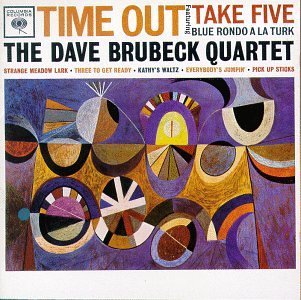Piano Sheets > Dave Brubeck Sheet Music > Three To Get Ready (ver. 1) Piano Sheet
Three To Get Ready (ver. 1) by Dave Brubeck - Piano Sheets and Free Sheet Music

About the Song
Three to get Ready is the first track on Side 2 of Time Out, a 1959 album (originally issued as CS 8192) by The Dave Brubeck Quartet, based upon the use of time signatures that were unusual for jazz (mainly waltz or double-waltz time, but also 9/8, and most famously 5/4).
Although the album was intended as an experiment (Columbia president Goddard Lieberson was willing to chance releasing it) and received negative reviews by critics upon its release, it became one of the best-known and biggest-selling jazz albums, reaching number two in the U.S. Billboard "Pop Albums" chart David Warren Brubeck (born December 6; 1920 in Concord; California); better known as Dave Brubeck; is an American jazz pianist. Regarded as a genius in his field; he has written a number of jazz standards; including -In Your Own Sweet Way- and -The Duke-. Brubeck-s style ranges from refined to bombastic; reflecting his.
Download this sheet!
About the Artist

Random article
The joy of reading piano notes Music is said to be the best medicine developed by nature. The thought and feel is said to have the power to bring back the dead. While playing music gives you the joy you just cannot contain, same is the case with reading piano music sheets. After all, it is sheet music which tells you exactly how to play that favorite tune of yours.
Many feel that reading piano music sheets is an ardent task. Well, this is exactly where are all wrong. It is certainly not the case that one glance and you will understand what is written in that sheet music. But it is certainly not as difficult as expected! Sheet Music is the language of expressing music in a readable form. And just like to learn a new language you need dedication and perseverance, same is the case with (More...)
